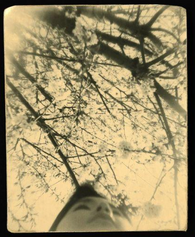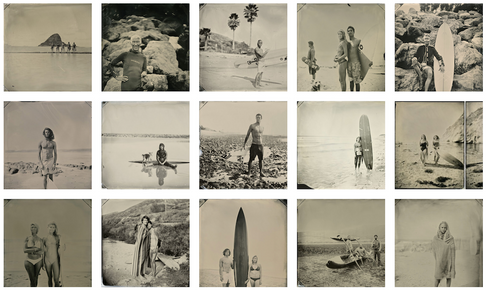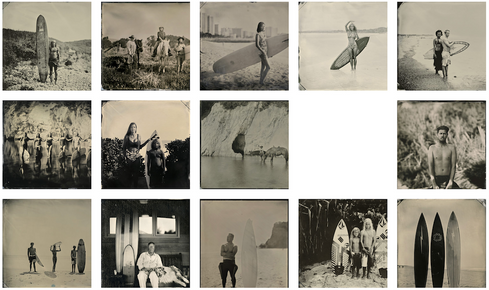P | P5 | AS 5 Photography is simple | Part 1 Research & Concept Development
- Amber Houbara
- Dec 5, 2024
- 11 min read
‘There are two fundamentals in all picture taking – where to stand and
when to release the shutter ... so photography is very simple.’
(Jay & Hurn, 2001, p.37)
So photography is simply viewpoint and moment... but what about subject? The simplest subject is the moment. You can record the moment with a snapshot, but when you review the photograph later you find you didn’t actually record the moment, you just recorded the ‘event of photography’.
It might take a very long time to simplify the whole world and its infinite framings into a subject that makes sense to you. Robert Adams said, ‘Sooner or later one has to ask of all pictures what kind of life they promote’ (Grundberg, 1999, p.34). For now, though, you should just feel comfortable with your subject. It should say something about you and, in the end, you like it!
Brief
The final assignment is an open brief. Take a series of 10 photographs of any subject exploring the theme ‘Photography is Simple’. Each photograph should be a unique view; in other words, it should contain some new information, rather than repeat the information of the previous image.
Assignment notes
In your assignment notes explore how you think you’ve answered the brief. This is a chance for a little philosophical reflection. EYV student Tor Burridge:
‘I have reconsidered my stand point that fundamentally photography is simple. When I shoot for the pure enjoyment of it photography does indeed feel simple. But really it is the product of layers of knowledge- on composition, on light, the technicalities of my camera. It is also inevitably influenced by the work of others, the subtle lessons that I have unknowingly committed to memory about angles and viewpoint. So taking into consideration the effects of context, the mind-set of
the viewer and also the subtleties of what influences a photographer to make an image in a particular way, I think it can be concluded that photography is simple - until it isn’t.’
Make sure you word process and spellcheck your notes as QWE (the Quality of Written English) is an important part of presentation. Include a ‘Harvard’ bibliography to reference your reading and research for this assignment. The quality of your references and how deeply you’ve responded to them is more important than the quantity.
You may like to request a video tutorial for this assignment. As well as the opportunity to discuss the development and/or resolution of the assignment work, your tutor will be able to answer any questions you may have on assessment and progression to the next unit.
Research
Michele Groskopf
‘Not to sound corny but I go on and on how much street photography has taught me about myself - more than it taught me about people, what it’s taught me about myself. What makes me tick, what I love to look at, what I’m interested in, how resilient I can be, how creative I can be. I wish that for everybody, I wish everybody’s passion led to that kind of self knowledge and self love.’
Michele Groskopf’s Interview with Ibarionex for Candid Frame is at https://audioboom.com/ posts/4242053-tcf-ep-312-michelle-groskopf [accessed 25/01/18]
Miho Kajioka
‘It was Japan’s 2011 earthquake and tsunami that reconnected me to photography. Two months after the disaster, while reporting in the coastal city of Kamaishi, where over 800 people died, I found roses blooming beside a blasted building. That mixture of grace and ruin made me think of a Japanese poem:
In the spring, cherry blossoms, In the summer the cuckoo,In autumn the moon, and in Winter the snow, clear, cold.
Written by the Zen monk Dogen, the poem describes the fleeting, fragile beauty of the changing seasons. The roses I saw in Kamaishi bloomed simply because it was spring. That beautiful and uncomplicated statement, made by roses in the midst of ruin, impressed me, and returned me to photography.
Miho Kajioka’s series ‘as it is’ is on Lens Culture: https://www.lensculture.com/articles/miho- kajioka-as-it-is [accessed 25/01/18]
Ane Hjort Guttu
‘I was in this state where everything could be art, or not... as if I was inside a zone where all things could be the result of a higher formal awareness: the roads, the chewing gum on the sidewalk, the yellow light over the city on our way home from kindergarten. Or it could not be, it didn`t matter any more. Everything became art, and in that same moment nothing’.
Morgan Quintance’s interview with the Norwegian artist Ane Hjort Guttu is on Soundcloud. Listen out for the slightly uncanny ‘bell’ at 18:52, it marks the beginning of the passage quoted above. The paradox that Guttu is referring to has been visible in art since Duchamp and examples of it appear here in the ‘Equivalents’ by Stieglitz and ‘Gas Stations’ by Ruscha. You experimented with it yourself in Exercise 1.4.
[accessed 25/01/18]
Reflection
Check your work against the assessment criteria for this course before you send it to your tutor. Make some notes in your learning log about how well you believe your work meets each criterion.
Reworking your assignment
Following feedback from your tutor, you may wish to rework some of your assignment, especially if you plan to submit your work for formal assessment. Assessors will make an objective evaluation of your work against the assessment criteria through the assignments, tutor reports and learning log, so after receiving your tutor’s comments, review your assignment and write up any changes you make in your learning log.
Michelle Groskopf
I researched Michelle's work, and I found her website and checked the sections she is displaying there. I think her work is very documenting, I can appreciate the strong techniques she is using, her creativity and style.
I think her work is very colourful, very up close, and very pop like. There were series I liked less like the TikTok houses, however I am guessing this is a part of the assignment she had to do.
I also assume a part of it is also doing work for magazines such as the New York Times, some of her photography is very straight forward and up close.
I did like the series of technology, and I mainly liked how she displayed the images together.
Source : Michelle Groskopf
I also watched this video with Michelle and I was really inspired by her. Initially looking at her website I felt it was a bit a lot and liked it less than other photographers, however I think because her work is so colourful, flash, bold and 'busy' I prefer seeing her work one by one rather than a lots of it all at once.
I assume the fact she is using flash, and really putting the reality into her photography, not trying to make things 'beautiful' is something I like on one hand, but defiantly makes me uncomfortable on the other.
I really enjoyed seeing this video with her, to see how she shoots on the streets and her philosophy.
Ponder: Taking photos of strangers in the street
I assume something which is bothering me a bit, it was articulated on this video but also on a few other places such as the course I did with Joel Meyerowitz and another course I took on Skillshare 'Portrait Photography on the Street: Connecting with Strangers' with Zun Lee, Artist, Author - taking photos of people on the streets and their privacy or how would people feel when you take their photo. I feel a bit awekward about going really up close to people and taking their photos, also we are in a day and age when everything has to be politically correct and need to be emphatic to other people's feelings. However I think that a kind smile and kind interaction, most people would like their photo to be taken, it is maybe a bit more invasive with a flash into their faces or shot at their back at hip level... (in my opinion).
I think it is true what most street photographers say - which is - it is a public space and it is our right to take people's photos - and also, nowadays we are already always being 'watched' whether it's online or in the streets (eg. street cctv, usage of social media with our face and body images etc).
Miho Kajioka
In a total opposite to Michelle's work, Miho's work relaxes me a lot.
I absolutely adore Japanese aesthetics and the space they utilise. Like the principle of Ma (recommended by my tutor to explore after one of my assignments, which I knew exists in Japanese tradition and especially the flower arrangement but I didn't knew the name for it).
Miho brings her beautiful observation of the world around her, as a 'slow person' as described in this video, in a fast paced world. I love her exploration with paper and other materials such as gelatine silver and wood in this video.
I also found this interview and really enjoyed it.
I liked the way Miho was describing the paradox of the roses which bloomed on ruins of the tsunami.
As she quoted Dogen:
'In the spring, cherry blossoms,
In the summer the cuckoo,
In autumn the moon, and in
Winter the snow, clear, cold.'
The season's pass, nature keeps regenerating itself, and sometimes, I am astonished by the polarities of how horrible and how beautiful this world can be all at once.
Source: Lensculture
Ane Hjort Guttu
I listened to the interview with Ane on Studio Visit (on Resonance FM), and I really liked her approach. She is using her photography and filmmaking in order to make a change in the world and create an impact - 'conceptual' photography/ filmmaking.
I liked the project she did with her son - the quote mentioned on the brief was describing it, her project about her son was almost like following him, then he was noticed he was followed and started following her - which became this interesting process - when art became everything but also nothing.
I also really liked her approach to teaching in art schools and teaching students to have their own voice not only in their art but also in front of the system. I feel the same and I feel like after a decade and a half of creating art and designing in many different forms, I have my own artistic 'spine' and I do my art, not needing someone approval.

Further research
As I was so inspired by the previous exercise of homage, I had an idea emerging for my final assignment. I love watching surf movies, and recently I watched an interesting film called 'Girls Can't Surf' it is about how hard it was (and still can be) for women in surfing. Surfing was and still is a male dominant sport, and for the female surfers who made it their athlete career path it was very hard. They didn't get to surf good waves at all, they weren't acknowledged at all, prize money was so little in comparison to male, some women were even punched in the face for showing up in the surf.
These days, surfing has already boomed, and it is very famous worldwide, I grew up wanting to be a surfer, even though it wasn't really accessible or popular, I only had one surfer friend and my parents didn't let me go surfing as they saw it as an extreme sport and dangerous. Nowadays in Israel so many kids are learning to surf and it became a very normal and popular sport.
Still to this day, if I am in the surf with mostly men, the energy can be very masculine and many men (and even women) nowadays lost the true essence of surfing, which is the Aloha spirit - sharing, connecting with the ocean and other beings, loving. If the energy is very masculine, it feels very competitive, aggressive and violent. Many times men will take a wave even though I or other women will paddle for it first (we call it 'drop in' on someone). My point is, it is not easy to surf from the first place, and moreover to be a women in surfing.
Add to surfing in general, where I am based since 2020, is a very raw and rugged coastline named Margaret River (on Wadandi Boodja, in aboriginal means the saltwater people's land. Wadandi - saltwater people, Boodja - 'country'/ land). surfing here is not for the weak heart, the ocean is very raw and very harsh, even the softest wave, is not soft.
I wanted to show the women around me who shares and same waters and play, with grace and kindness, and show how wonderful, beautiful feminine and fierce can women surfers can be.
In the backdrops of the wonderful coastline and landscape of what 'country' has to offer.
I started with a great research, and the idea was slowly forming in my head.
Another inspiration for this project was a visit my partner and I had to the surf museum on our recent trip down south.
This museum felt like stepping back in time, and it inspired both my homage project and this one.
Uncovering a Lifetime of Photography and Surf with Dave Ferguson
World-renowned surf photographer forced to shoot undercover | Sunday
Inspired by a surf documentary I watched in the past 'Girls Can't Surf'
Women and the Waves Documentary 1 & 2
Articles Read
From the movies 'Women and the Wave 1&2' I came to know about this wonderful photographer Joni Sternbach. Joni works with tintype wet plate technique which she is developing right on the beach, I was amazed by how beautiful these photographs were and how beautiful this technique is, but also how amazing her photography, composition and the way she chose to show these surfers.
Initially when I watched the movies, I was amazed by these photographs, I was yet to know who was behind them, and only later on from my research I found Joni's photographs on this article and basically fell in love with her work.
Photos taken on my phone from the movie women and the wave
Source: Joni Sternbach's Website
I was fascinated by her lecture, and loved her early and later work as well, however it is the surfland photography and her approach to it which made me really fall in love with her work.
At the point of finding Joni Sternbach work I have already started taking photographs for this project, however it defiantly played a role in my continuation for this project.
Another photographer Joni was very inspired by (other than Robert Frank and Hiroshi Sugimoto) is Misrach, she also made a homage to his photography (below). I made a quick google search to see his photography and loved it as well.

Source: Artsy

Another wonderful photographer I came to learn about was Stephan Vanfleteren, his famous photo book Surf Tribe was so beautiful I had to get a copy.
Same like Sternbach, he looked at surfers as a spiritual group, people whom are attracted to nature as their playgroup and spiritual space, as well as constant adventure quest.
"In Surf Tribe, photographer Stephan Vanfleteren shows that there is far more to surf culture than just competitive sport. Vanfleteren looks beyond the traditional surf spots of California and Hawaii and searches the globe for people who live in places where sea and land meet. He documents a fluid community, which has nature as its one and only leader. He pictures talented youngsters as well as living icons and revered legends, competition surfers as well as free surfers. Portraits of Kelly Slater, Gerry Lopez, John John Florence, Laird Hamilton, Bethany Hamilton, Greg Noll, Stephanie Gilmore, Mick Fanning, Joel Parkinson, Mickey Munoz, Filipe Toledo and Tom Carroll."
Stephan Vanfleteren not only took portraits of these surfers, showing their unique personality and beauty, he also chose for some of them surf items which represents them as a person and surfer. This inspired me for my project a lot.
After such an extensive research, I decided to go and photograph 10 different women I know who surf, each has her individual charm and connection to the ocean. To be honest, when I made the initial list of my surfer friends in the region, the list wasn't very long, I knew I needed 10 women as the brief was asking for 10 images, I had probably 15-20 women on my list, some of which were out of town.
I ended up finding 10 women who were available (also in such a short time frame), but it made me think maybe this will develop to a longer larger project.
Next post >> Part 2: Process.











































Commentaires